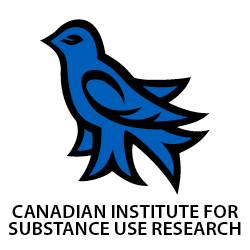The summer of 2014 was a troubling season for music festivals in Canada, with five young people dying and dozens more admitted to hospitals at a number of festivals for harms associated with alcohol and other drug use. At the Canadian Centre on Substance Abuse (CCSA), we started asking why this was happening and what more could be done to prevent such tragedies.
Can safety be standardized?
We took a look at whether anyone had developed national guidelines to reduce alcohol- and other drug-related harms at music festivals. Discovering there were none, we contacted our network of partners within the Canadian Community Epidemiology Network on Drug Use (CCENDU) and issued a bulletin about harms at music festivals. This led us to connect with Dr. Adam Lund and Sheila Turris at the University of British Columbia mass gathering medicine group, who have been working on music festival safety for a while.
It was clear that true impact could not be achieved without multi-stakeholder collaboration from all implicated sectors. To support this, CCSA funded the first-ever gathering of a group of stakeholders from all major sectors responsible for safety at music festivals — event organizers, concert promoters, police and security guards, paramedics, emergency physicians, and those working in health promotion and harm reduction — to discuss what could be done to prevent these deaths and other harms.
Overwhelming support
Interest and commitment was far greater than we had ever imagined! We had to expand our meeting space, and many of our nearly 50 participants paid their own way and travelled great distances to attend the January 2015 meeting in Vancouver. Particularly striking was how these stakeholder groups had never had the opportunity to sit down together to share and reflect upon their objectives, the way they operate and the pressures they face. Given the opportunity, they quickly discovered that everyone shared similar goals: to support a fun environment and prevent harms to festivalgoers.
Capitalizing on the collective enthusiasm in the room, the group brainstormed key elements involved in safety planning at music festivals and identified areas for improvement. CCSA took the lead in assembling these recommendations into a report that was released in June 2015 — just ahead of summer festival season.
Recommendations to reduce drug- and alcohol-related harms at music festivals
The recommendations outlined in the report covered all aspects of music festival design and execution, and applied to event organizers, staff, security services, first responders and those working in health promotion and harm reduction. The report called upon organizers to ensure reliable access to free drinking water, as well as training for all on-site personnel to recognize and respond to signs of someone experiencing harms from drug or alcohol use, among other recommendations. It also highlighted the need for chill spaces where festival attendees can seek shade and shelter and get away from the noise and activity, and recommended having drug- and alcohol-free zones. The report also raised the need for evidence-based substance use prevention messaging, including using social media to draw attention to potential risks and harms.
Another important finding was learning about the diversity of environments in which those working in health promotion and harm reduction operate in across Canada. At the time of the meeting, the kinds of strategies or interventions that were possible in one area of the country, such as drug checking, were simply not possible in others. In contrast other strategies, such as the support of peer outreach workers, were readily accepted and embraced without controversy.
Collaboration is key
The report saw immediate interest and uptake, with more than 130 downloads within the first month and close to 100 media mentions (print, broadcast and online) within the first week alone. But the biggest indicator of success was seeing uptake and endorsement of recommendations from event organizers with music festivals such as Pemberton, Digital Dreams and Veld publicly indicating they were following recommendations from the report. In addition to festival organizers other groups such as the U.S.-based harm reduction organization DanceSafe also promoted the report via their networks and organizations such as BC-based ANKORS indicated that the report became valuable in helping them to connect with new groups of stakeholders that they had not previously engaged with.
The challenge: how do we as a community move things forward?
At the heart of this project is a vision to collaboratively develop a set of voluntary, evidence-based standards that event promoters and other stakeholders can strive toward, giving credibility to the event and permitting attendees and other interested groups (e.g., parents, law enforcement, municipal officials) to feel confident that all efforts to make the festival as fun and safe as possible are being taken.
To achieve this goal, we need to collect and synthesize the evidence supporting the recommendations and advance the priority areas for action outlined in the initial report. CCSA is prepared to focus on drug and alcohol harms, but music festival safety is much broader than this. We will need others to join us in collective action and lead other aspects of a comprehensive approach.
For more information, view Drugs at Music Festivals or email info@ccsa.ca to get involved.
Authors: Dr. Matthew Young and Tina Barton, Canadian Centre on Substance Abuse
Featured image: Photo of the Shambhala Music Festival. Photo by Flickr user Coen Halmans, Creative Common License
**Please note that the material presented here does not necessarily imply endorsement or agreement by individuals at the Centre for Addictions Research of BC



